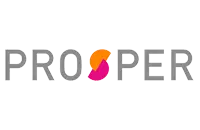Low-income loans: Personal loans for a tight budget




Key takeaways
- Secure a personal loan with competitive terms by exploring options such as applying for a lower loan amount, finding a cosigner or working with online lenders.
- It is crucial to have enough income to afford your monthly payments, as defaulting can have serious impacts on your credit score.
- If you cannot get a personal loan, alternatives include secured loans and credit cards.
If you have a low income and face an unexpected expense, it may seem like a personal loan is completely out of the question. Most lenders require applicants to have a stable income. Some even require a minimum annual amount. However, some lenders don’t consider income. Others have a holistic approval and lending model.
Some lenders may charge a higher interest rate if you have a lower income. So, make sure the total monthly payment doesn’t stretch your budget too thin before signing on. Consider the interest rate, the principal loan amount and applicable fees when calculating your total monthly payment. Falling behind on your payments will leave you with credit score damage and growing debt.
Low-income personal loan lenders
It’s possible to qualify for a personal loan with a low income. For example, Upstart’s minimum income requirement is just $12,000 a year. These four lenders feature personal loans with low minimum income requirements:
| Lender | APR range | Loan amounts | Loan terms | Minimum credit score |
|---|---|---|---|---|
| Upstart | 6.70%-35.99% | $1,000–$50,000 | 3 - 5 years | No Requirement |
| Upgrade | 7.99%-35.99% | $1,000–$50,000 | 2 - 7 years | 580 |
| Happy Money | 8.95%-29.99% | $5,000–$40,000 | 2 - 5 years | 640 |
| Prosper | 8.99%-35.99% | $2,000–$50,000 | 2 - 5 years | 600 |

Upstart
-
Upstart has a low annual minimum income requirement of $12,000. What makes the lender even more attractive to prospective borrowers is there’s no minimum credit score requirement if you don’t have enough credit history to generate a score. Upstart looks beyond your credit score by evaluating your employment and education history to gauge if you’re a good fit for a loan.

Upgrade
-
While Upgrade has a higher minimum credit score, it has a lower minimum income. There is no hard requirement, but you must have enough to support the payment of any new loan you would be taking out in addition to your current debts. Upgrade also offers direct payments to creditors if you’re borrowing to consolidate your debt.

Happy Money
-
Happy Money offers one loan — the Payoff loan. It’s designed for consolidating high-interest credit card debt. While the minimum interest rate may not seem low, it’s much lower than the average credit card rate, which currently sits at 20.55 percent. The lender also offers online money management tools and financial education resources to help you take control of your finances.

Prosper
-
Prosper is a peer-to-peer lender, meaning that loans are funded by several investors instead of one institution. Its minimum income is anything above $0, so long as it supports the payments. Prosper also supports co-borrowers, making it easier to qualify.
How to get a low-income loan
Lenders want reassurance that you earn enough income to make timely loan payments when you’re adding new debt. While not all lenders have a minimum income requirement, they all have other approval criteria. For example, you may need to provide proof of income or show you have no recent defaults or bankruptcies.
Before applying, compare approval requirements between multiple lenders. Then, compare them against your own finances. Apply only to lenders whose minimum requirements you meet.
- Credit score: Perfect credit isn’t required to qualify for funding. However, good personal loan rates are typically reserved for borrowers with good or excellent credit. If you have a lower credit score, expect higher interest rates and fees. For example, those with scores below 690 are likely to get a rate between 17.80 percent and 32 percent. By comparison, the average personal loan rate is currently above 12 percent.
- Income: Some lenders request proof of steady and verifiable income. They may ask you to show a recent pay stub, W-2 or tax return, along with your employer’s contact information. If you’re not a W-2 employee but earn income from self-employment, side hustles, child support, alimony or government benefits, list these on your loan application.
- Debt-to-income (DTI) ratio: Lenders want reassurance that taking on another debt won’t overwhelm your budget. Your DTI is calculated by dividing the sum of your monthly debt payments by your total monthly gross income. Lenders like DTIs at or below 36 percent, though some lenders will accept DTIs up to 50 percent.
- Proof of residence: The lender may request a copy of a mortgage statement, lease agreement, or utility bill that includes your name and physical address listed on the loan application.
If you don’t meet most lenders’ eligibility criteria and don’t need immediate funding, consider working with a credit counselor or moving forward with a debt management plan to help you pay down existing debt and improve your credit.
For a faster turnaround, you can strengthen your approval odds by asking a creditworthy friend or relative to co-sign the loan with you. However, co-signing puts the co-signer on the hook for payments if you fail to make them. Make sure you can reasonably afford the payments before going this route.
Alternatives to a personal loan when you have low income
Whether you’re unable to qualify for a personal loan or would prefer to explore other funding sources, consider the following options.
-
If you have good or excellent credit, consider a credit card with an introductory interest-free period. Paying off the entire balance before the promotional period ends means you won’t pay any interest on charges you incur. Otherwise, this form of financing could be costly. If you spend more than you can afford to pay back before the offer expires, interest starts to accrue and you end up only making the minimum monthly payment for some time.
-
You’ll have to put up collateral to get a secured loan. However, they’re attractive to many borrowers because you can get approved with a lower credit score and minimal income. The downside is you could lose your asset if you default on the loan payments.
-
Some credit unions offer small-dollar emergency loans to their members. These loans are often referred to as payday loan alternatives. They are sometimes reserved for individuals with low income or credit issues who would struggle to get a personal loan elsewhere.
-
Pawnshop loans are available to low-income borrowers. You’ll have to hand an item worth more than what you want to borrow to the pawn shop to get cash. They’ll keep it until you repay the loan plus fees in full. But if you default on the payments, the pawnshop will sell your item to recoup its losses. Pawn shop fees often translate to APRs in the triple digits, so this is a last-resort option.
-
Although they’re easy to access if you have a low income and imperfect credit, payday loans should only be used as a last resort for a few reasons. For starters, the interest rates are often well into three digits. Some go as high as 650 percent, far higher than even pawnshop loans charge. And as the name suggests, the balance is generally due by your next payday. It’s dangerously easy to get into a cycle of ballooning debt with payday loans.
Bottom line
Taking out a personal loan is sometimes necessary, but having lower income can make it challenging to manage. The upside is some lenders offer flexible, affordable loan products with competitive rates for those with a lower income.
Before you apply, make sure you can afford the monthly payments. Explore well-regulated options like personal loans and credit cards before turning to riskier, higher-interest alternatives.
You may also like

Can you get a student loan with bad credit?

What are instant loans? Everything you need to know

How to get a $5,000 personal loan: Quick funding options

How to get a $100,000 personal loan


